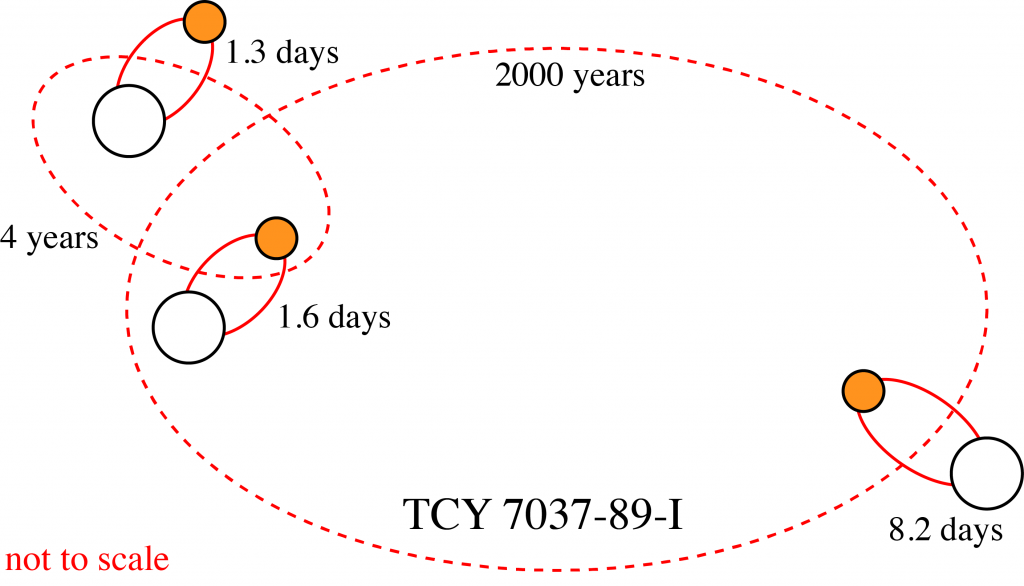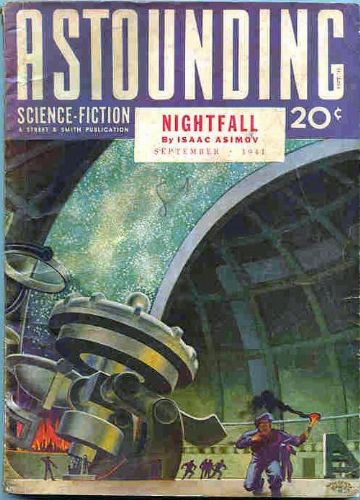NASA’s Transiting Exoplanet Survey Satellite (TESS) has discovered a sextuply-eclipsing sextuple star system. I think of “Nightfall”.
The six stars of TCY 7037-89-I orbit each other in three binary pairs, as in the schematic. The primaries are slightly larger and hotter than our sun and the secondaries are about a half as large and a third as hot. All stars eclipse each other as seen from Earth, and a neural network helped identify them from the TESS light curves.

In 1941, a Columbia University chemistry graduate student published one of the most famous short stories of science fiction’s Golden Age. Isaac Asimov‘s “Nightfall” imagines a planet orbiting six suns with a civilization evolved in perpetual daylight. Only once every 2000 years does an undiscovered moon eclipse a sun when it is alone in the sky plunging the civilization into darkness — and revealing tens of thousands of newly visible stars!


Thanks, Mark! I enjoy reading your posts as well.